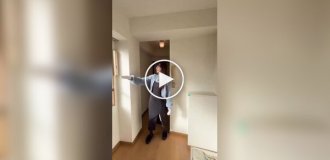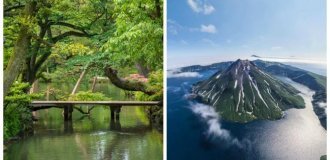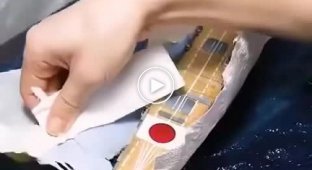During World War II, all major participating countries required their soldiers to fight to the death, but only the Japanese followed this requirement to the letter. In the land army, aviation and navy of the Land of the Rising Sun, “teishintai” units were formed - warriors who swore to give their lives for the Divine Emperor and Japan. 
Kamikaze controlling a torpedo
The most famous of these fighters were kamikaze pilots. But the fleet also tried to destroy the enemy with the help of kaiten torpedoes (in Japanese, “changing fate”) controlled by kamikaze submariners.
The idea of creating a human-controlled torpedo to destroy enemy ships appeared among officers of the Japanese fleet shortly after the catastrophic defeat at Midway Atoll. Japan lost its most powerful aircraft carriers and best naval aviation pilots in the battle. It became obvious to many that the initiative in the vast Pacific Ocean had passed to the Americans. The Land of the Rising Sun had to go on a strategic defense, which, given the overwhelming advantage of American industry, could only end in total defeat. In this situation, only non-standard moves could save the Japanese.
One of these unconventional moves occurred to two Japanese submarine lieutenants. Second Lieutenant Sekio Nishina and Lieutenant Hiroshi Kuroki came up with the idea of creating a heavy torpedo that would be controlled by a person. This idea was not new - the same Japanese used mini-submarines during the attack on Pearl Harbor. But now the torpedo pilots had virtually no chance of survival. 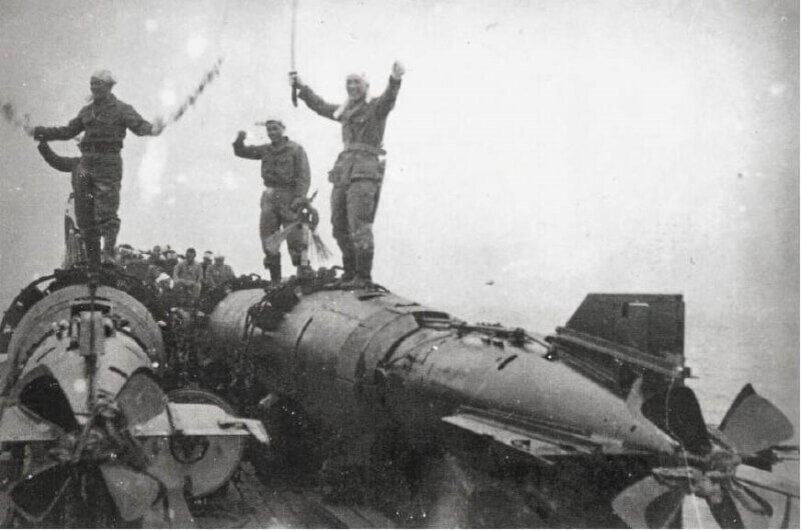
Pilots operating torpedoes.
The junior officers had no practical work experience, but they managed to find a like-minded person - Hiroshi Suzukawa, who worked in one of the design shipbuilding organizations. In January 1943, the development of the project was completed; all that remained was to present it to important ranks of the Imperial Navy. But this is precisely where difficulties arose - given the difficult situation on the fronts of the empire, the military stopped paying attention to the innovative ideas of inventors, concentrating on cooperation with already established design bureaus.
It is difficult to say how Nishina and Kuroki were actually able to draw the attention of the naval leadership to their project, but there is one legend about an act in Japanese style. According to it, the officers wrote a letter to the Minister of the Navy with their own blood; due to national traditions, he was obliged to read the message.
At first, naval leadership rejected the idea of creating human-guided torpedoes, but new defeats in naval battles forced the sinking Japanese fleet to clutch at this straw. Development of a new weapon began at the end of winter 1944. It was immediately planned to use the Type 93 torpedo and, based on its units, create a weapon that could be piloted by a submariner. 
Initially, it was not planned that deliberate victims would control the kaiten - these torpedoes included a pilot ejection system. However, the chances of surviving after ejection during a successful attack on the ship were minimal, and who would save the Japanese pilot? Certainly not Americans, but no one would put a submarine at risk for the sake of a meager chance to save the pilot. Soon the ejection system was no longer installed.
The first "kaiten" were released in July 1944, after tests they were hastily modified and put into service. The defeat of the fleet in the battle near the Philippine Islands did not leave time for any significant improvements. In total, Japanese engineers developed 7 different types of man-controlled torpedoes, but only “Type 1” reached real use.
This torpedo had a diameter of 1 m, and a charge weighing 1550 kg was placed in the bow of the hull. It was believed that this charge would be enough to sink almost any enemy ship. There were as many as 3 fuses - a contact one for an explosion when torpedoing an enemy, an electric one for detonating a warhead, and an automatic hydrostatic one, which was part of the self-destruction system. 
Diagram of the Type-1 torpedo
To operate the engine, there was an oxygen cylinder with a capacity of 1550 liters, and another 9 cylinders with a capacity of 160 liters each ensured the operation of the rudders. To control the trim there were 4 small tanks. The total length of the Type 1 torpedo was 14.75 m.Since the 1 m diameter was too large for any torpedo tube, it was decided that the kaiten would be placed outside the submarines using a special design and connected to it through a special airlock for the pilots. One carrier submarine could be armed with 4 human torpedoes. These weapons were also installed on surface ships, but in reality they were used extremely rarely. It was also envisaged to create coastal bases for the kaiten in order to protect the coast of Japan proper, but this was never implemented. 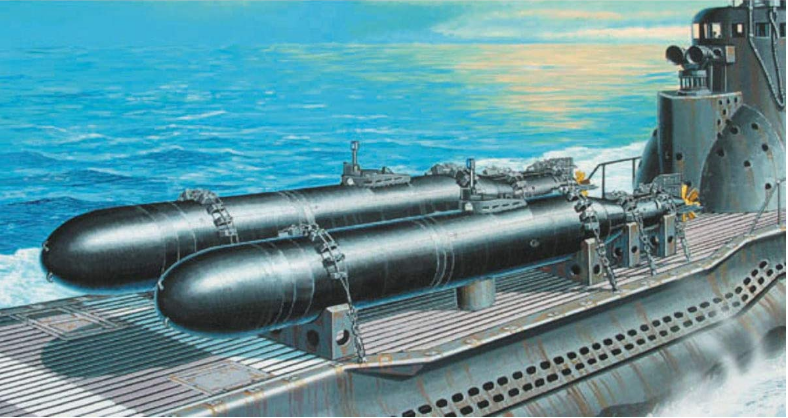
Type-1 torpedoes
When the submarine captain spotted an enemy ship, he gave the order to prepare the kaiten for attack. The kamikaze pilots climbed into the torpedoes through the airlock, the target coordinates were transmitted to them via internal communication, then the submarine turned around to direct the kaiten towards the enemy ship and unhooked the torpedoes. The pilot independently started the engine and guided his weapon at a depth of several meters to hit the enemy underwater. A small retractable telescope could be used to correct the course. However, in reality, the periscope was rarely used, since the discovered torpedo was shot by the Americans. 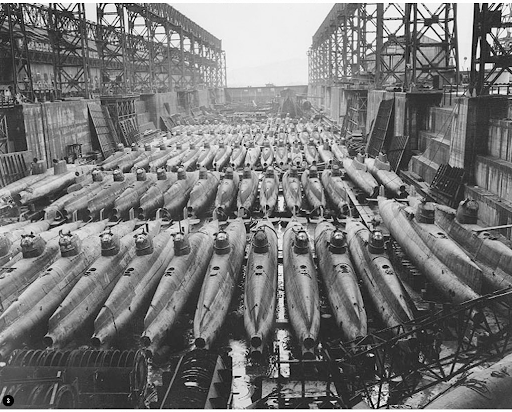
Although approximately 300 kaiten were built, no more than 100 were used in combat. Lieutenant Kuroki died during one of the training trips. Lieutenant Nishina, being a kaiten pilot, won the right to make the first torpedo attack, and on his last trip he took an urn with the ashes of a comrade. The combat use of human-guided torpedoes did not justify itself - they caused more damage to the imperial fleet than they caused losses to the Americans. 
American tanker Mississinewa, destroyed by Kaiten human torpedoes
In total, the Japanese kaiten destroyed the large American tanker Mississinewa, and they were also able to destroy or damage no more than a dozen boats and vessels. However, after the disaster at Midway Atoll, no weapon could save Japan from defeat.
Add your comment
You might be interested in:






